March was anything but boring in FX. We came into the month riding the tail end of a USD rebound, and left with everything feeling like it’s teetering on the edge – rate paths are somewhat murky, trade tensions are flaring, and cross-asset volatility is starting to feel sticky. If February was all about recalibrating rate cut expectations, then March has been all about geopolitics grabbing the wheel.
Let’s break down where the majors are and what mattered this month.
USD – From Rate King to Risk Barometer
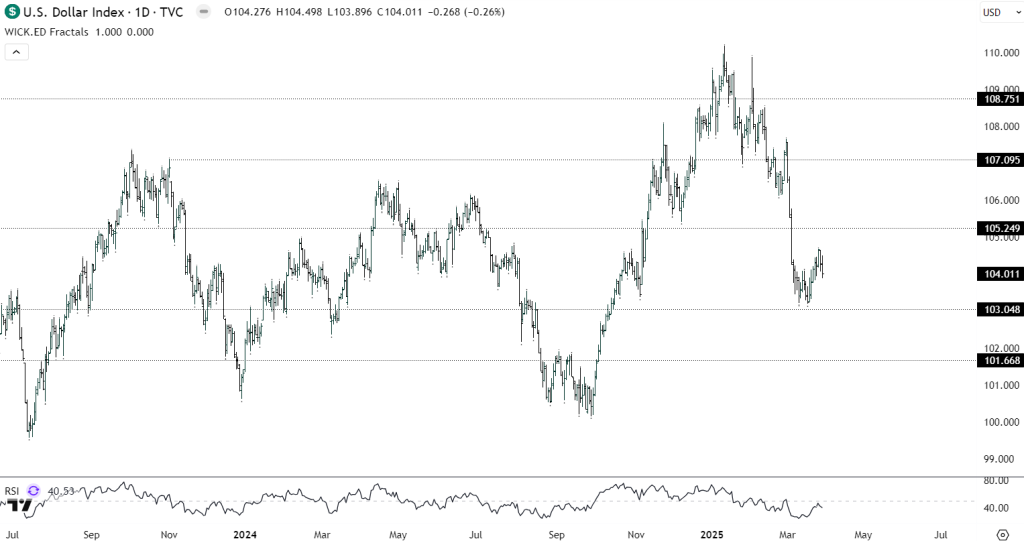
The dollar’s had a shaky month. DXY flirted with 107 early on as sticky inflation prints led markets to dial back Fed cut expectations. Then it reversed lower, finishing March around the 104 mark at the time of this writing.
What changed? Simple – growth signals started cracking. Jobless claims ticked higher, regional Fed surveys rolled over, and the Atlanta Fed’s GDPNow took a nosedive after some ugly inventory and trade data. Add to that the political wildcard: fresh U.S. tariffs on Canadian and Mexican imports and talk of wider measures against Europe and China.
That combo of weaker data and rising trade war risk, started pricing in a slower Fed and potential demand shock. Now the market’s back to pricing two cuts by year-end, but with rising implied vol. We’re not trading the Fed anymore. We’re trading uncertainty.
EUR – Weak But Stabilizing
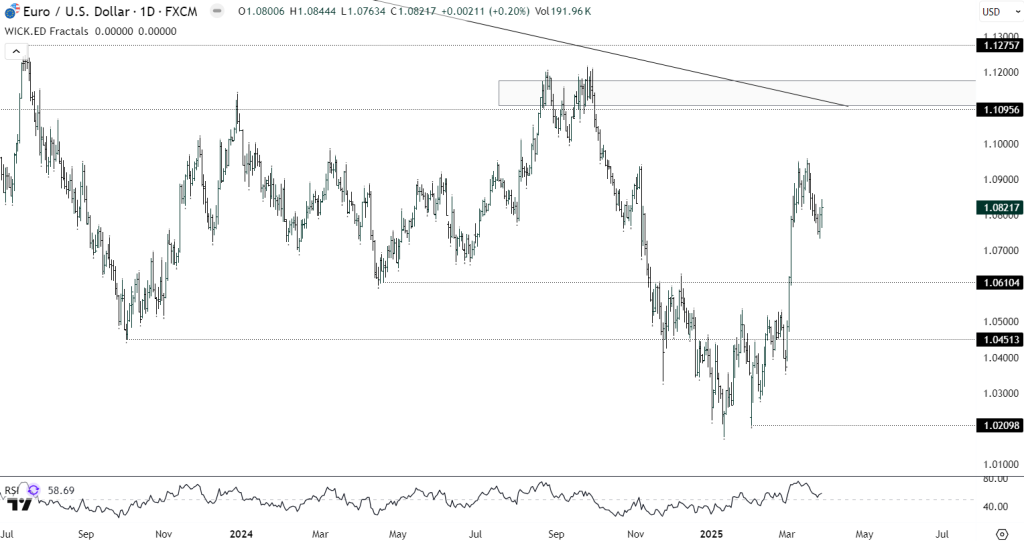
The euro started March like a tired boxer — bruised from soft data and ECB dovishness — but it found some footing mid-month.
ECB cut again (25 bps to 2.50%) early March, but Lagarde left the door open for a pause, saying future decisions would be “data-dependent” (translation: we don’t want to push our luck). Growth remains sluggish, but there are hints of stabilization –German ifo and PMI surprised a touch to the upside, and inflation isn’t collapsing.
Also helping? USD weakness late-month and some relief that the EU hasn’t been slapped with U.S. auto tariffs (yet). Still, political risks are back on the radar – EU elections in June, Trump trade rhetoric heating up, and regional energy issues aren’t going away.
EUR/USD reclaimed 1.095 late in the month. If U.S. data continues to soften, this pair could test the 1.10 handle again, but we’re not seeing strong euro conviction flows – just USD fatigue.
GBP – Holding Up, Quietly Impressive
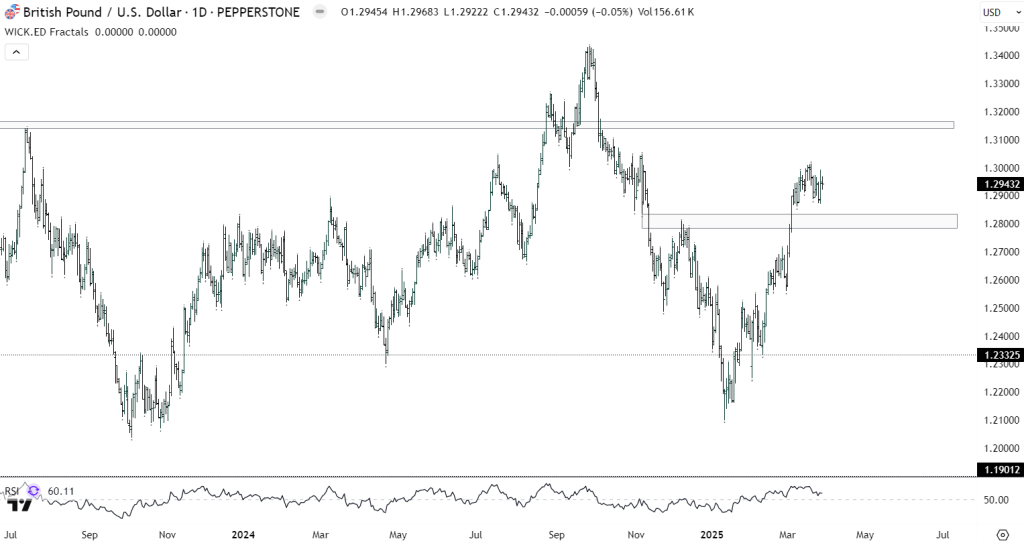
Sterling’s flying under the radar, but it’s been one of the more stable majors. GBP/USD spent most of March between 1.27–1.30, supported by a still-hawkish BoE and better-than-expected UK data.
Inflation in the UK is still sticky – 6%+ annualized core – and the BoE isn’t in a rush to cut. One dissenting voter even wanted to hold rates in the last meeting. On top of that, there’s been talk of the UK securing a bilateral trade “understanding” with the U.S., which might shield it from the tariff crossfire the EU is facing.
Bottom line: The UK economy looks surprisingly resilient, and the pound is benefiting from that. Relative to the euro, GBP has outperformed – EUR/GBP slipped below 0.84 late in the month:
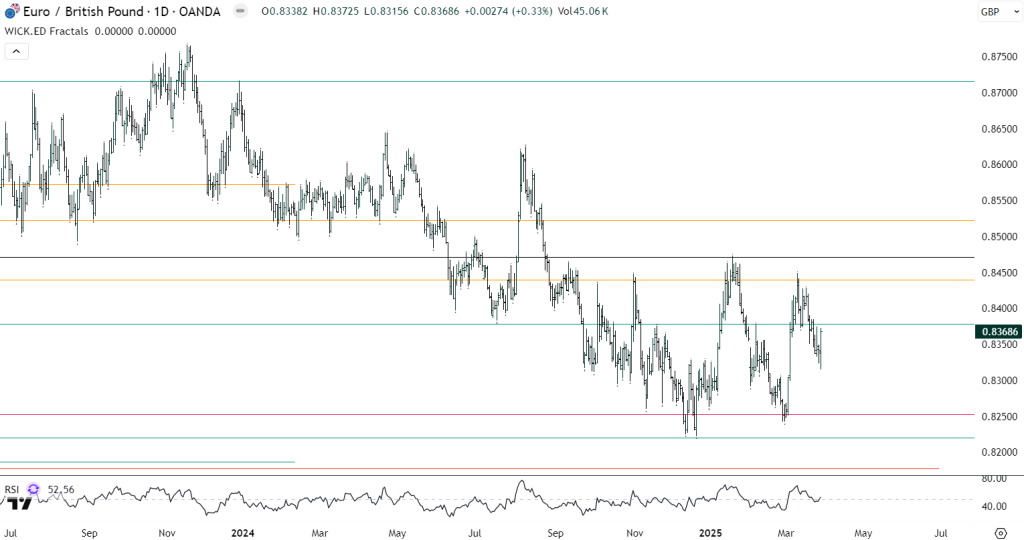
JPY – BoJ Finally Moved, and the Market Yawned
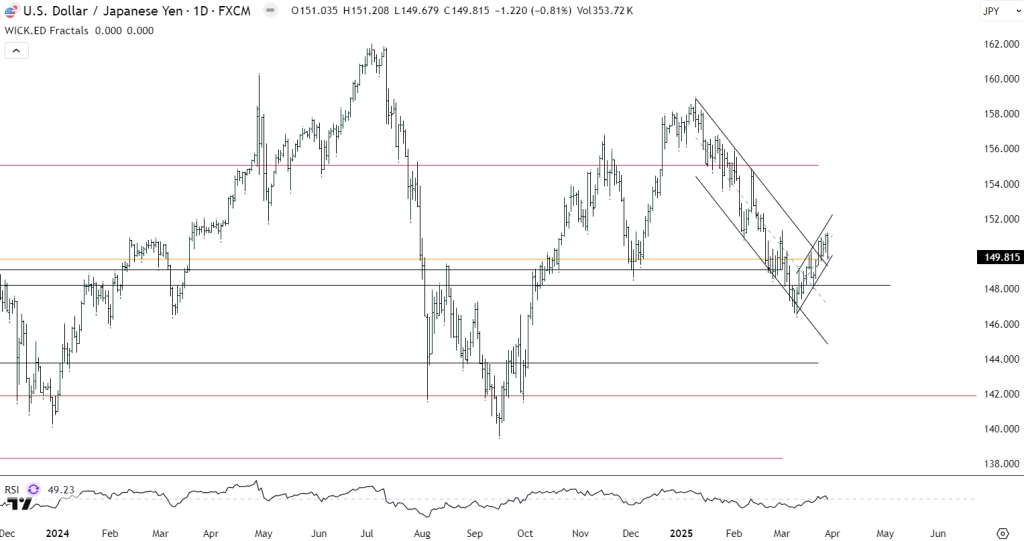
The Bank of Japan finally hiked rates in March – yes, really – taking them to 0.00–0.10%, their first hike since 2007. That should’ve been a big deal. But in typical FX fashion, it was already priced in.
USD/JPY spiked to 151.20-ish, then faded, as traders realized the BoJ isn’t committing to a full tightening cycle. The yield differentials still scream “carry me,” and Japanese investors continue to plow capital offshore. Add in U.S. trade jitters (which ironically support USD/JPY due to haven flows), and you’ve got a tug-of-war.
The key here is global risk. If we get a proper risk-off wave, yen spikes. Otherwise, USD/JPY keeps grinding higher – but intervention risk is creeping back above 152.
AUD & NZD – Still Heavy

The Aussie and Kiwi both struggled in March. AUD/USD chopped between 0.6480 and 0.6620, while NZD/USD hovered just above 0.60 — a long way off the 0.63–0.64 zone from late 2024.
The RBA held in March, but the tone was clearly shifting dovish. Meanwhile, soft Chinese data weighed on commodity currencies. For the Kiwi, it’s worse – the RBNZ is still cutting, and the New Zealand economy looks weak. Recession talk isn’t going away.
There’s just no catalyst here. Unless China surprises with a major stimulus or commodities get a proper bid, AUD and NZD are sell-on-rally territory. Risk-sensitive and yield-uninspiring – not a great combo.
Quick Chart: March Performances
| GBP | +1.2% |
| JPY | -0.4% |
| AUD | -1.1% |
| NZD | -1.6% |
| CAD | -1.8% |
| CHF | -0.9% |
Final Thoughts – Watch the Headlines
March reminded us that we’re not just trading central banks anymore – we’re trading politics, risk, and volatility. Tariffs, potential interventions, and cross-asset sentiment are calling the shots.
For April, here’s what I’m watching:
- U.S. data: If ISM or NFP cracks, USD could lose its footing.
- ECB & BoE rhetoric: The euro’s bounce might be fragile.
- USD/JPY: Above 152, intervention risk rises fast.
- CAD & trade talks: This isn’t 2018 — Canada’s more vulnerable now.
- Risk sentiment: If equities wobble, expect safe-haven flows to dominate FX again.
Stay nimble. Stay curious. And as always, respect the tape.

